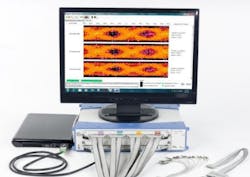Raytheon gets go-ahead for lot 4 low-rate initial production of Miniature Air Launched Decoy (MALD)
EGLIN AFB, Fla., 29 May 2011. The Raytheon Co. Missile Systems segment in Tucson, Ariz., received the go-ahead to start lot 4 low-rate initial production of the Miniature Air Launched Decoy (MALD) under terms of an $83 million U.S. Air Force contract announced Friday.MALD is an affordable air-launched programmable expendable air-launched flight vehicle that mimics the combat flight profiles and signatures of U.S. and allied aircraft to fool enemy radar, missiles, and other air defenses. Awarding the contract were officials of the Air Force Air Armament Center at Eglin Air Force Base, Fla.The Air Force accepted the first production unit of the Raytheon MALD last February. The expendable unmanned aerial vehicle looks like a U.S. or allied aircraft to enemy integrated air defense systems. Formations of MALDs flying into enemy air space can confuse and deceive enemy air defenses. Before MALD, manned aircraft were used to enter enemy airspace to deceive the enemy.
MALD weighs less than 300 pounds, is about eight feet long, and has a range of about 500 miles. MALD flies a pre-programmed mission after launching from its host aircraft.
Earlier this month Raytheon launched two MALD instrumented shapes from the ramp of a Lockheed-Martin C-130 cargo aircraft using the Raytheon-funded MALD Cargo Air Launched System. It was the first MALD deployment from a cargo aircraft.
For more information contact Raytheon Missile Systems online at www.raytheon.com/businesses/rms, or the Air Force Air Armament Center at www.eglin.af.mil.
